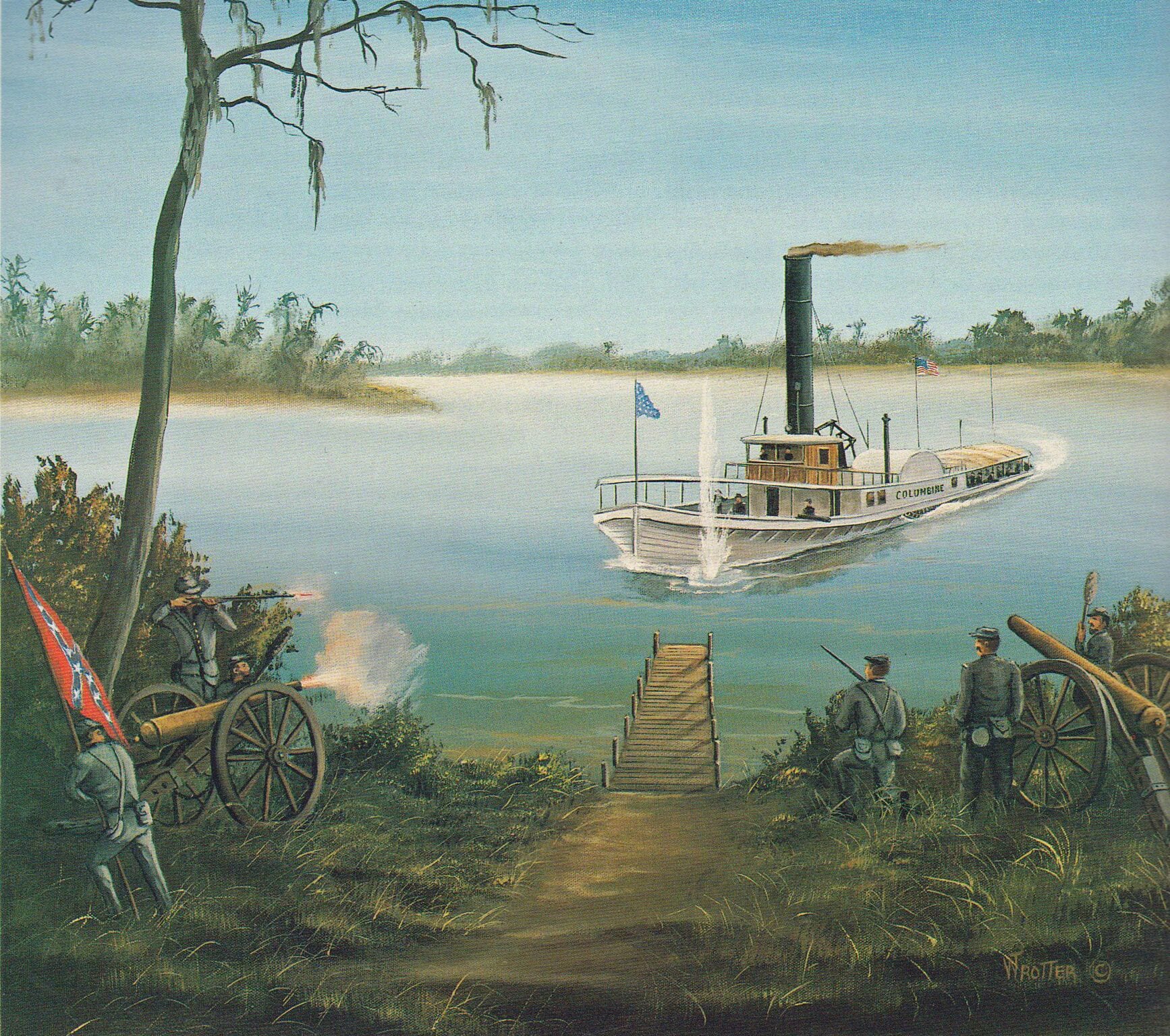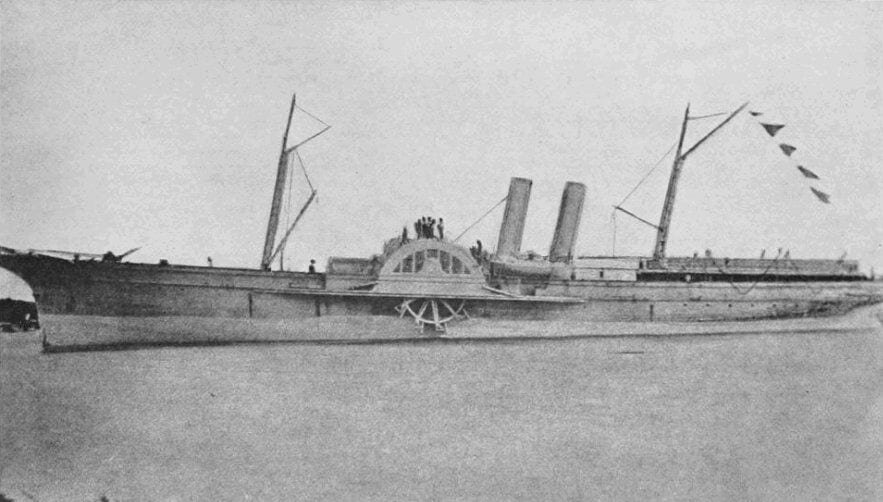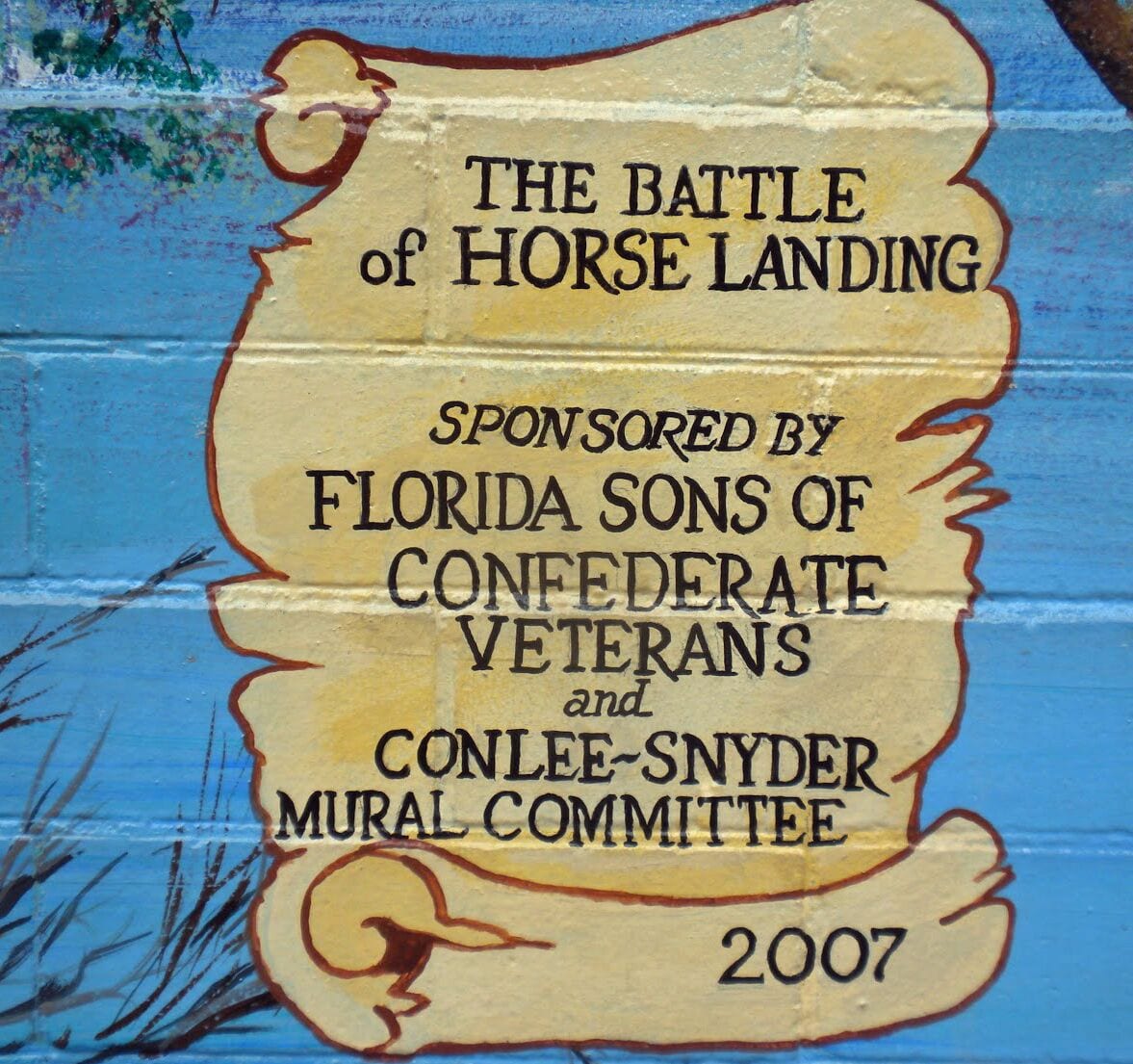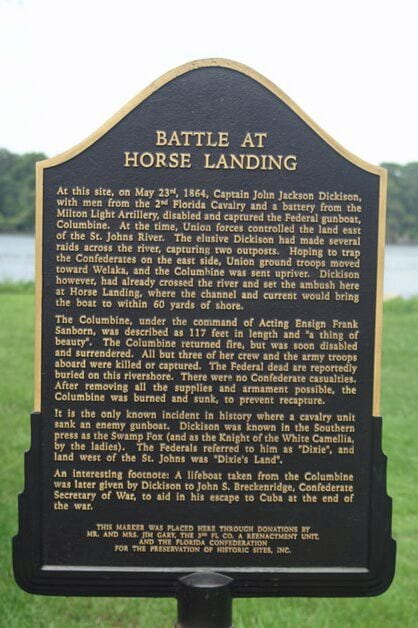Florida Waterways
“The Columbine Shipwreck”
By Kevin McCarthy
CAPTIONS: A painting showing the shipwreck A map of the location A Confederate blockade runner in the war Captain J.J. Dickison Historic marker at the site Another plaque about the battle
Our Florida waterways contain a multitude of objects, some good (fish, turtles, sea grass) and some not good (hyacinths, pollution, and shipwrecks). The shipwrecks include some caused by nature (the Commodore off Daytona Beach, the Atocha in the Keys), some deliberately sunk (the America near Palatka, the Massachusetts off Pensacola), and some sunk in war (the Gulfamerica off Jacksonville Beach, the Columbine in the St. Johns River).
The story of the deliberate sinking of the last-mentioned ship is pretty unusual since it is about the capturing of a ship in a river by a dismounted cavalry, something very rare in the annals of war. In May, 1864, in what some call “the major Confederate naval victory in Florida,” a sidewheel tug armed with two twenty-pounder rifles became part of the South Atlantic Blockading Squadron.
The 1850 wooden tug, Columbine, which was 117 feet long and almost 21 feet wide, patrolled the south Atlantic off South Carolina before arriving in Jacksonville to patrol the St. Johns River, attack Confederate ships in the river, and transport goods and people.
Toward the end of May, 1864, as the vessel left Welaka and approached Horse Landing, Confederate cavalry under the command of the brilliant Captain J.J. Dickison on the western bank of the river dismounted from their horses, opened fire on the boat, disabled it completely, and watched it drift helplessly onto a sandbar. The Union commander surrendered when he realized how futile any resistance would be. The toll of the battle was heavy as half of the 148 Union soldiers were wounded. The scuttling of the vessel did not have much effect on the outcome of the war, but it did rally Floridians behind Captain Dickison and gave his troops a much-needed psychological lift in the weary months at the end of the war.
The remains of the Columbine rested for over one hundred years on the bottom of the St. Johns until divers chanced upon her in the 1970s. Very little is now left of the ship, but some recovered artifacts are on display in local museums, artifacts that tell a little-known story of the Civil War. This is one of the shipwrecks I wrote about in a book entitled “Thirty Florida Shipwrecks” that my friend, the late William Trotter, illustrated with color paintings.
In a way, having some two thousand and more shipwrecks in our waters is not surprising since we have one of this country’s longest continuous coastlines and such a long history of people living along our coasts and lakes. Shipwrecks, then, are just one more part of our rich Florida waterways.
Kevin McCarthy, the author of Thirty Florida Shipwrecks – 1992 (available at amazon.com), can be reached at ceyhankevin@gmail.com.






